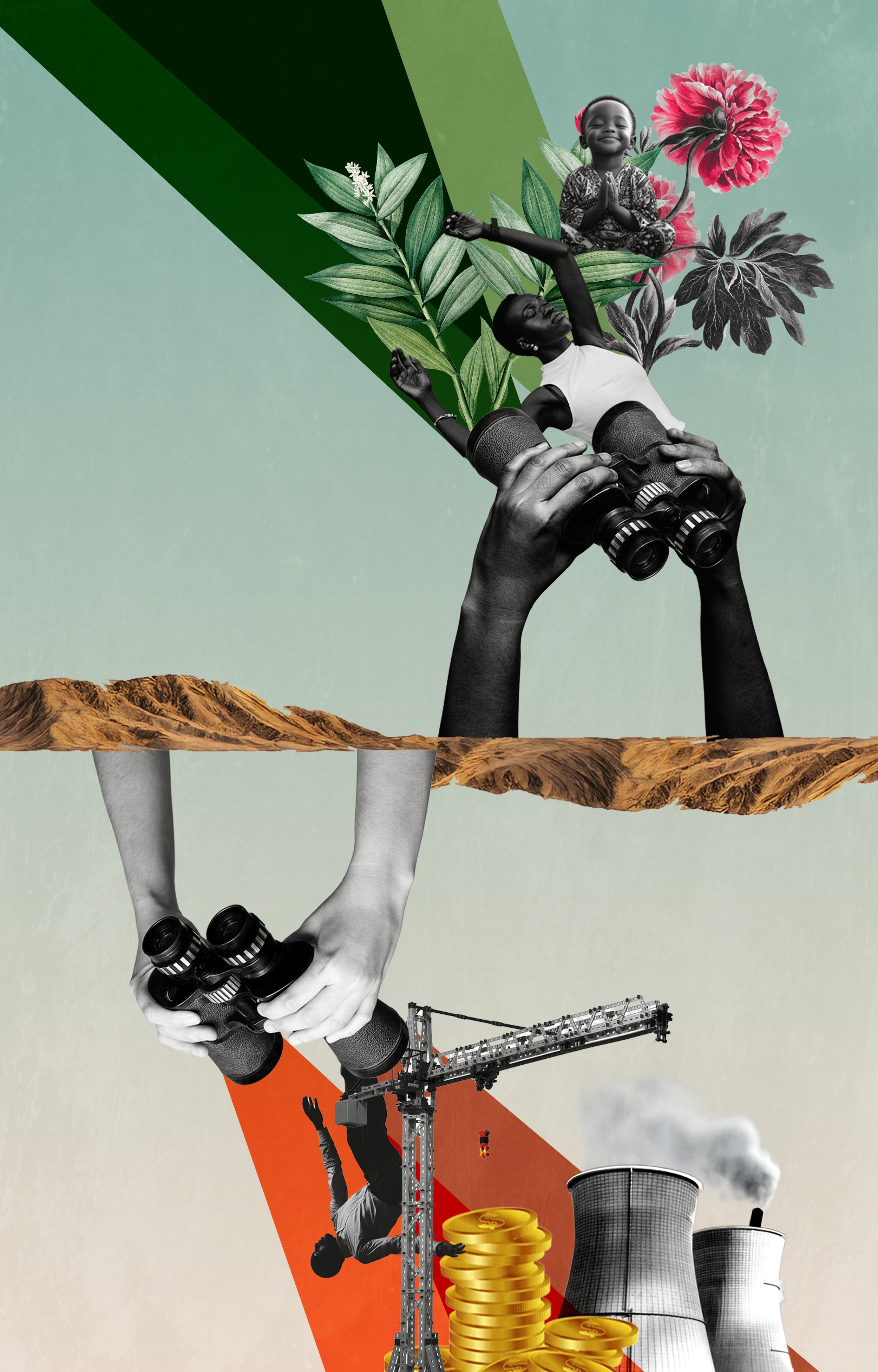
GOMA CRIES
We join our cries to the poignant cries
Goma cries the cries of our times
A time of genocides
No!
A time of grotesque transformations—
of victims turned perpetrators,
saviors turned destroyers.
NO!
Three monkeys in
a time of bullies
of unsnarling
of the hypocrisy of powers that once groped
for their seats on the Titanic
stamping on the essence of our humanity.
A time of hurtling toward unattainable
distances
(Mars, watch out!)
While the masses die en masse
Deafening times,
Deafening of the hearts,
hearts that cry out
but only hear their own echoes
Minds fraught with fear//Fear preying on minds
high on TikTok, tit for tat
Opium.
The time of AI.
Oh, Goma!
Goma cries
among the
cries of Gaza
The Rohingya’s cries
The Cries of Sudan
The Uyghurs’ cries
The cries of Eritrea
Haiti
Mali
Mayotte
Burkina Faso
Niger....
All the cries of our times
A time of classifying cries,
of ranking crimes,
discarding humanity
No!
A time of how can we survive this?
Time cries
Crying cries?
Cry!
Silence.
Tik...
Tok...
Camera!
Sort, rank, file, discard
Times, time and time again.
Times of that same ol’(his)story—
of the many faces of supremacy,
retaliations fueling endless cycles
of hate and violence,
squabbles over words
masking the atrocities of ethnic cleansing
and being televised
in a world where images are wielded like weapons
and words are censored.
A time to self-censor?
No!
Call for contributions
Djolifon is an African feminist initiative that nurtures and inspires the emergence and growth of the bearers of the otherwise in aesthetics and artistry. We seek to catalyze forms of creativity and activism that embrace the sensuality of the impossible and are comfortable with uncertainties, failures, and the limitations of politics. We especially seek ideas and practices that bring into the light the ways of the small, the slow, the “inefficient,” the “irrational,” and above all the invisible and the unthinkable in artistic and political imaginaries and endeavors.
In doing so, we join our cries to the poignant cries of our time for a collective exploration of the burning question: What do these times ask of us?
Let us bring threads of poetry, painting, photography, music, op-eds, dance, slam, graffiti art, sculpture, videos, podcasts, artist interviews, exhibition reviews, festival reports, theater, film, and web series—any form of artistic expression—that will help us weave our heartfelt cries as bearers of the otherwise into one diverse, creative tapestry.
Artists: what whispers (or shouts) do we hear?
Activists: in the struggle for change in a faltering world, how deep are we willing to delve?
Goma Cries the Cries of our Times is an opportunity to weave our heartfelt cries into a tapestry of intergenerational, trans-local, trans-disciplinary, and trans-professional African perspectives on this moment of unprecedented convergence of existential, civilizational, and environmental crises. Our call for contributions is an invitation to collectively articulate and foreground other and othered understandings of the work to be done and the journey yet to be traveled.
Let us bring threads of poetry, painting, photography, music, op-eds, dance, slam, graffiti art, sculpture, videos, podcasts, artist interviews, exhibition reviews, festival reports, theater, film, and web series—any form of artistic expression—that will help us weave our heartfelt cries as bearers of the otherwise into one diverse, creative tapestry.
How to contribute
Artworks: Provide a brief description of the piece along with the artist’s contact details (including social media handles) and website. Images of artworks should be submitted as high-resolution TIFF or JPG files (at least 1,000 pixels lengthwise).
Artist Profiles or Interviews (max. 1,200 words): These can focus on artists, activists, scholars, researchers, lecturers, spiritual companions, or anyone engaged in the visual arts. Interviews should include a short introduction with a critique of the interviewee’s work, and should be edited to create a compelling narrative flow.
Reviews (max. 1,500 words): These can cover exhibitions, festivals, theater productions, films, web series, television productions, dance, and any other artistic performances. Reviews may be retrospective or focus on current and upcoming works. They can highlight a single piece or examine a collection of related works.
Op-eds (max. 3,000 words) and Conference Notes (max. 3,500 words): Submissions should be original, unpublished works not under review elsewhere.
Send your contributions to ensemble@djolifon.org
For more information, please contact:
Mariam Armisen—mariam@djolifon.org
Anastasie Langu Lawinner—anastasie@djolifon.org
Deadline: Rolling submissions
Credits: Collages by Nakhanu Wafula and photos by Anastasie Langu Lawinner




